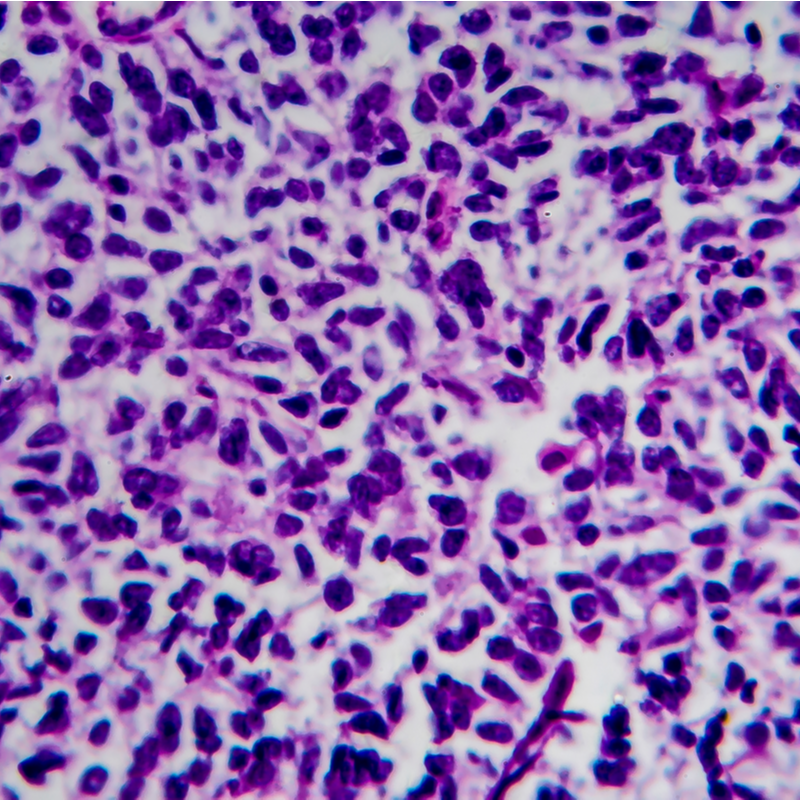
What is nephroblastoma?
Nephroblastoma, also called Wilms tumour, is a solid malignant tumour of the kidneys. It is named after the Heidelberg surgeon Max Wilms, who described this disease in detail around 1900. The tumour develops through a degeneration of tissue, is composed of different types of tissue and resembles embryonic kidney tissue. In most cases, immature kidney precursor cells are found in the tumour. However, types of tissue such as muscle tissue, cartilage tissue, epithelial tissue and connective tissue may also be present in the tumour. A malignant nephroblastoma is also called a mixed tumour.
How dangerous is a nephroblastoma?
Due to its rapid growth and tendency to form metastases very early, makes nephroblastoma extremely dangerous. In Germany, about 15 % of those with the disease have already formed metastases when they are diagnosed. These occur particularly frequently in the lymph nodes, the immediate vicinity of the kidneys and in the lungs. But in individual cases, metastases are also possible in the liver and, in very advanced disease, also in the bones, outside the abdominal cavity and in the central nervous system. About 5 % of children with nephroblastoma have both kidneys affected from the beginning .
What are the symptoms of nephroblastoma?
At first nephroblastoma does not show any symptoms or pain. Affected children usually suffer from a fat and bulging abdomen, which is often misjudged as a sign of good nutrition. In about 10 % a paediatrician palpates the abdominal tumour during a precautionary examination without any other symptoms being present. Abdominal pain or bloody urine, for example, are the first symptoms of the diseases, but occur only rarely. However, even new pain in the back can be an indication of a nephroblastoma. Just like digestive disorders, weight loss, fever and cough, which is triggered by lung metastases, can be symptoms of a tumour in the kidney.
How is nephroblastoma diagnosed?
If the doctor or paediatrician finds any signs of a nephroblastoma in the medical history or during the physical examination, the affected person is admitted to a hospital that is familiar with kidney tumours. If a tumour is suspected in the kidney, many different examinations such as CT and MRI, but also a scintigraphy are necessary, firstly to be able to make a definite diagnosis and secondly to find out exactly which form of the disease is involved. It is also essential to find out how far the tumour has already spread . This is indispensable in order to be able to clarify an optimal treatment and the prognosis assessment of the patient .
In which stages is a nephroblastoma classified?
A nephrrblastoma can be classified into the following five stages:
- Stage I: The tumour capsule is not yet exceeded and the tumour is restricted to the kidney. The tumour can be completely removed .
- Stage II: The tumour can be completely removed. The tumour exceeds the tumour capsule. Lymph nodes have not yet been affected .
- Stage III: The tumour can no longer be completely removed, regional lymph nodes are affected or the tissue structure of the tumour is ruptured. However, there are no distant metastases.
- Stage IV: Distant metastases are present in the liver, lungs, bones and/or brain.<(li>
- Stage V: Bilateral nephroblastoma is present.
How is nephroblastoma treated?
Mostly chemotherapy is started first, which is intended to shrink the tumour so that it can then be removed more easily. In some patients, primarily those in whom the tumour is still quite small, the therapy begins with surgery. The aim of the operation is to remove the tumour and possibly also the metastases. As a rule, successful surgery is followed by chemotherapy. Depending on the stage of the tumour or in the case of metastases, additional radiation therapy may be necessary. Which therapy strategy is used is decided on a case-by-case basis and depends on the results of the histological examination of the tumour.
What is the prognosis for nephroblastoma?
The prognosis for children and adolescents is very good. More than 90 % of patients can be cured in the long term thanks to modern examination methods and combination therapies. However, the prognosis always depends on the type of tumour and how advanced it is at the time of diagnosis . It can be said that the earlier the nephroblastoma is discovered and the less malignant it is , the greater the chances of cure. In patients with non-metastatic nephroblastoma, the chances of cure are more than 90 %. In patients with a metastasised and very malignant tumour, the cure rate is significantly below 90 %.
What is the follow-up treatment for nephroblastoma?
A follow-up treatment of the kidney tumour is not only necessary for children, but for all patients. If the tumour could be removed surgically, the oncology specialists usually take care of the follow-up treatment. The type and extent of follow-up treatment depends primarily on the stage of the tumour. The control examinations of a nephroblastoma are essential in order to be able to detect a recurrence at an early stage . Recurrence of the cancer is particularly common in the first two years. Regular examinations include sonography. But regular X-ray examinations of the lungs are also part of aftercare. If there are no metastases in the lungs after five years, the patient is considered cured. From this point on, no more check-ups need to take place.
How can nephroblastoma be prevented?
The causes of nephroblastoma are still completely unknown. Since the tumour occurs particularly frequently in children, it is necessary to clarify whether there are genetic dispositions that could favour the disease , including the Beckwith-Wiedemann syndrome.
